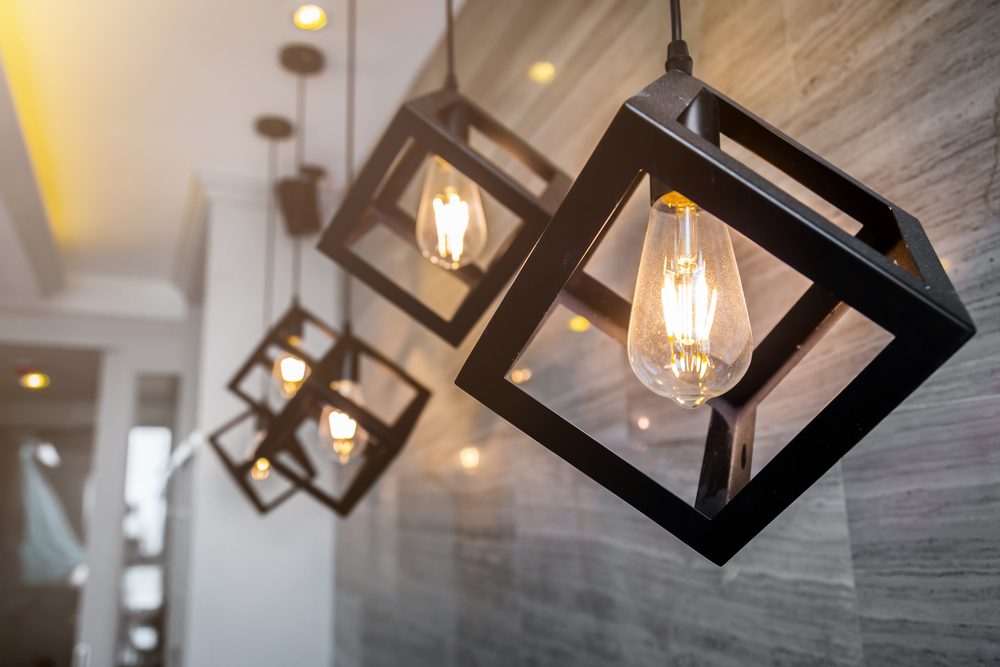Good lighting is essential to achieving a high-quality image, whether for a piece of wall art, a manicured lawn, or a professional photo shoot. Regarding interior design, lighting can make or break a space. While it may seem simple to lay out lighting fixtures in a home, careful consideration should be given to every lighting decision. While chandeliers and elegant fixtures may be eye-catching, the subtle illumination details truly exude luxury in space. This guide breaks down various techniques, elements, and tips to remember when selecting lighting for high-end spaces. You’ll learn to create a luxurious atmosphere in any room by exploring lighting design and arrangement. From task to accent lighting, we’ll show you how to create the perfect balance of style and functionality. Whether designing a new space or updating an existing one, our guide to luxury fixtures will help you elevate your interior design to the next level.
Lighting Design Tips And Ideas For Your Interior
Consider the Type of a Room
When designing lighting for a home, it is important to consider the unique lighting needs of each room. Rather than approaching every space similarly, creating a lighting plan for each room is best.
Use a Dimmers
Dimming systems are essential for luxury lighting as they allow light customization based on preferences and time of day while creating great mood and entertainment lighting.
Layer Your Lighting
It is also possible to use lighting to add dimension and texture to a room, even though it is primarily functional. The best way to achieve this is through layering, which involves mixing and matching different lighting sources to create a cohesive and polished look.
Include Lots of Task Lighting
Luxury lighting requires efficient task lighting to set it apart from standard fixtures. Examples of luxury task lighting include under and in-cabinet illumination, integrated stair lighting, and hallway lighting, which can enhance the beauty and utility of often neglected spaces.
Choose Functional Lighting
When designing the lighting for a space, it’s important to consider the tasks that will be performed in that area and how it can support them. For example, if you plan on reading in a particular area, ensure the lighting provides sufficient visibility. This can be achieved through strategically placed spotlights, wall lights, or table lamps. It’s also important to consider tasks like cooking or watching TV and determine the appropriate light types. Planning can help you select the proper lighting for your interior.
Keep a Sense of Consistency
Consistency in lighting design is just as important as consistency in color schemes or themes in interior design. Using too many different styles, color temperatures, or plans can make visitors feel uneasy. Lighter tones can open up a room and make it seem more significant, while statement lighting or pops of color can draw attention to a particular feature or object. Darker hues can create a sense of coziness or luxury. Whatever mood you want to create, it’s important to maintain a sense of consistency, but that doesn’t mean you can’t be daring!
Choose Your Lighting Carefully
The linear LED light fixture is now preferred due to its numerous advantages over traditional lighting. This is because it offers lower energy usage and reduced carbon footprint and because certain conventional lighting products can increase energy costs and harm the environment.
Take Advantage of Smart Controls
Smart lighting controls offer the benefit of allowing you to customize the lighting levels in your home, which can significantly impact a room’s ambiance. Dimming the lights can create a different look and feel for a space, and adjusting the illumination during events can add to the overall atmosphere of your home.
Find a Balance With Different Types of Light
When lighting a room, it’s important to balance different types of light to create multiple focal points and increase the versatility of the space. Rather than relying on a kind of light to meet all needs, consider installing various styles, such as lamps, walls, and pendant lights. For example, wall lights around a bathroom mirror can provide focused lighting for grooming. At the same time, low-hanging pendants above bedside tables can serve as a clutter-free alternative to traditional night-time reading lamps.
Maximize your Access to Natural Light
Maximizing access to natural light is the best way to light your home. The subtle color changes throughout the day directly impact our bodies and can influence our alertness. Without natural light, we may feel disconnected from these natural rhythms, affecting our sleep patterns and overall well-being. For areas without adequate natural light, “full-spectrum” light bulbs can be purchased and used in places like a home office or breakfast nook to provide access to the full spectrum of light.
Lighting According to the Space
Bedrooms
When planning the lighting in a bedroom, it is important to consider functionality and comfort for all users. Opt for wall-mounted lights that don’t shine directly into your eyes, and choose bulbs with appropriate intensity. Dimming options are also crucial, and bedside lamps are a great choice, especially for bedtime readers. Consider how natural light can be incorporated into the bedroom’s lighting design. While shades or blinds can block outside light at night, a window furnishing that allows morning light to filter in can help improve your sleep patterns and natural body clock.
Kitchen and Dining Room
When it comes to lighting design, the kitchen and dining areas are crucial as they allow you to create different moods using light as your primary tool. Smart lighting control systems can help, but having the right fixtures, designs, and placement is important. Track or directional lighting can be used while cooking to provide adequate illumination in food preparation areas without overwhelming the dining area. There are three popular lighting choices for the kitchen: down-lights, architectural lighting recessed into cabinetry and track illumination. An ambiance of relaxation can be created in the dining room or space using cleverly placed wall lights and pendant lighting.
Living Spaces
The living room is a vital part of any home, as it is a space where many activities take place. This includes relaxing, reading, watching TV, and entertaining guests. Since the living room serves many different purposes, it is important to have different types of lighting that can be easily adjusted to suit each activity. For instance, accent lighting is essential for highlighting the room’s artwork or other focal points. Meanwhile, floor lamps are very useful for reading or working on something, as they provide direct illumination. However, dimmable downlights or wall lights can help create a more relaxing atmosphere when you want to unwind after a long day. Dimmable lights are especially ideal, as they let you adjust the amount of light to precisely what you need, whether watching TV, playing with your children, or having a romantic dinner with your partner.
Bathrooms
When it comes to bathroom lighting, the size of the room is a crucial factor to consider. Most people prefer a well-lit bathroom for their morning routine, but it’s essential to pay attention to the direction of the light. A light source from both sides is recommended to avoid creating shadows when using mirrors. Additionally, if you enjoy a relaxing bath or spa in your bathroom, it’s important to have the ability to create a more soothing atmosphere. Wall lights are an excellent option for this purpose.
Conclusion
When it comes to luxury lighting, attention to detail is critical. By carefully considering the lighting needs of each room and layering different types of light, you can create a cohesive and polished look that exudes luxury. Whether you’re designing a new space or updating an existing one, our guide to luxury lighting has provided you with a wealth of tips and techniques to help you achieve the perfect balance of style and functionality in your home.








